
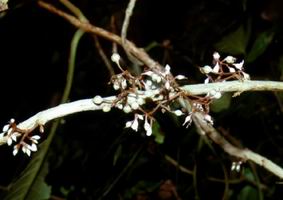
Penins. Malaysia, Pulau Tioman, phot. A. Weber (1984).
Full name and orig. publication: Rhynchotechum Blume, Bijdr. 775 (July-Dec. 1826).
Etymology: From the Greek ρυνχος, rhynchos, beak, and (?) τοιζος, toichos = wall; the meaning of the name is obscure.
Synonyms: Isanthera Nees (1834), Corysanthera [Wall. ex] Endl. (1839), Cheilosandra Griff. (1847), in syn., Chiliandra Griff. (1854).
Infrafamilial position: Didymocarpoid Gesneriaceae - "Basal Asiatic genera”(Weber 2004).
Description: Shrubs, stem erect, woody, unbranched or branched. Leaves opposite (sometimes alternate?), (sub)equal in a pair, surface woolly, hirsute or glabrescent. Inflorescences (few- to) many-flowered, arrangement lax. Sepals 5, free to base, equal. Corolla tubular-campanulate, tubular, limb slightly bilabiate, upper lip 2-lobed, shorter than or equalling lower lip, lobes rounded. Stamens 4, included, filaments inserted near corolla base or in the middle, anthers free, with parallel thecae, confluent at apex, dehiscing longitudinally, staminode present or lacking. Nectary ring-shaped or absent. Ovary ovoid, unilocular, placentae recurved; stigma globose. Fruit indeshiscent, an ovoid or globose berry.
Chromosome number: 2n = (18-)20.
Species number: 13-15 (18 described).
Type species: Rhynchotechum parviflorum Blume
Species names (incl. publication and synonyms): See Skog, L.E. & J.K. Boggan. 2005: World checklist of Gesneriaceae: http://persoon.si.edu/Gesneriaceae/Checklist.
Distribution: NE India, Nepal, Bhutan, SW & S China, SE Asia and Malesia to New Guinea.
Notes: The indehiscent fruit ("berry") is only the formal character linking Rhynchotechum with Cyrtandra, but the two are probably not related (as suggested by their former placement in tribe Cyrtandreae). This view is, inter alias, supported by the different chromosome number which is in strong contrast to the uniform number 2n = 34 in Cyrtandra. Both new morphological (Burtt, unpubl.) and molecular data suggest that Rhynchotechum is allied to Boeica and thus belongs to the rather primitive genera of Asiatic Gesneriaceae. Phytochemically remarkable is the presence of anthrachinones (Lu et al. 1998).
Selected references: Burtt, Notes Roy. Bot. Gard. Edinburgh 24: 35-39 (1962), checklist; Wang, Guihaia 4: 183-189 (1984), reg. rev. (China); Li & Hsieh, Taiwania 42: 91-98 (1997), notes on Taiwanese spp.; Wang et al., in Wu & Raven, Fl. China 18: 393-395 (1998) (Chinese spp.); Lu et al., Phytochemistry 47: 315-317 (1998), ibid. 49: 1135-1137 (1998), phytochem.; Wang & Wang, Taiwania 45: 355-365 (2000), reg. rev. (Taiwan); Hilliard, in Grierson & Long, Fl. Bhutan 2(3): 1326-1327 (2001), reg. rev.; Burtt, Thai Forest Bull. (Botany) 29: 81-109 (2001), annot. checklist (Thailand).
Bibliography: See Skog, L.E. & J.K. Boggan. 2005. Bibliography of the Gesneriaceae. 2nd edition: http://persoon.si.edu/Gesneriaceae/Bibliography.
Illustrations:
 |

|
Rhynchotechum parviflorum Blume, type species
Penins. Malaysia, Pulau Tioman, phot. A. Weber (1984). |
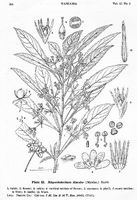 |
Rhynchotechum discolor (Maxim.) B.L.Burtt
Taiwania 17: Fig. 12 (1972). |
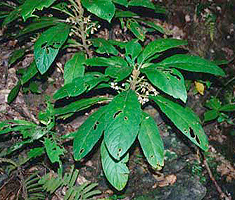 |
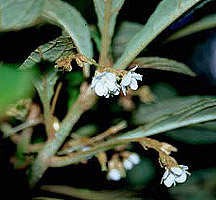 |
Rhynchotechum
discolor (Maxim.) B.L.Burtt
Japan, Okinawa, Mt. Bannadake, phot. G. Kokubugata (1999). |
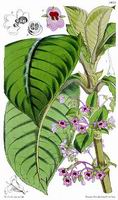 |
Rhynchotechum ellipticum (Wall. ex
D.Dietr.) A.DC.
Bot. Mag. t. 5832 (1870). |
last modified: 2007-07-13